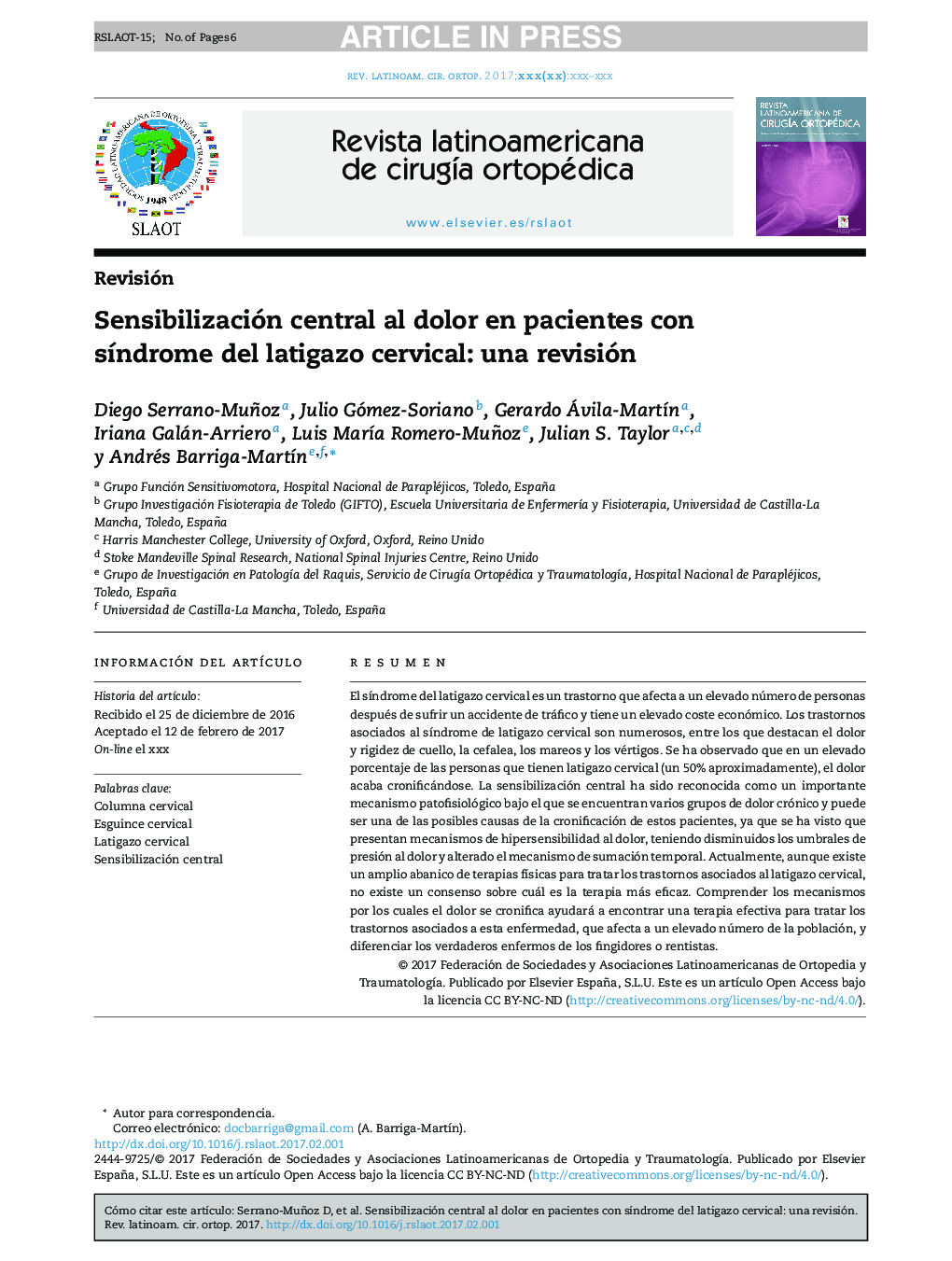| Article ID | Journal | Published Year | Pages | File Type |
|---|---|---|---|---|
| 8803374 | Revista Latinoamericana de Cirugía Ortopédica | 2016 | 6 Pages |
Abstract
The cervical whiplash syndrome is a disorder that affects a many people following road traffic accidents and which has a high economic cost. The disorders associated with whiplash syndrome are numerous, and include neck pain and muscle stiffness, headache, and dizziness. In approximately 50% of people who suffer from whiplash, the initial pain develops and is maintained into the chronic phase. Mechanisms of central sensitization to pain has been recognized as an important pathophysiological mechanism which may mediate various types of pain and which may be responsible for its chronification in these patients, as they show signs of hypersensitivity to pain, including decreased pain pressure thresholds and altered temporal summation to noxious stimuli. With regards to treatment, although there is a wide range of physical therapies available to treat whiplash disorders, currently there is no consensus on which therapy is most effective. Understanding the mechanisms by which pain becomes chronic following whiplash will help to develop an effective therapy that could directly treat the disorders associated with this pathology in many people with chronic pain symptomatology based on the evidence-based diagnosis of pathophysiological mechanisms.
Keywords
Related Topics
Health Sciences
Medicine and Dentistry
Orthopedics, Sports Medicine and Rehabilitation
Authors
Diego Serrano-Muñoz, Julio Gómez-Soriano, Gerardo Ávila-MartÃn, Iriana Galán-Arriero, Luis MarÃa Romero-Muñoz, Julian S. Taylor, Andrés Barriga-MartÃn,
